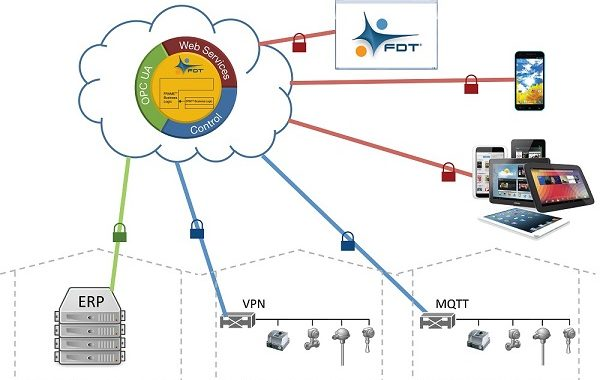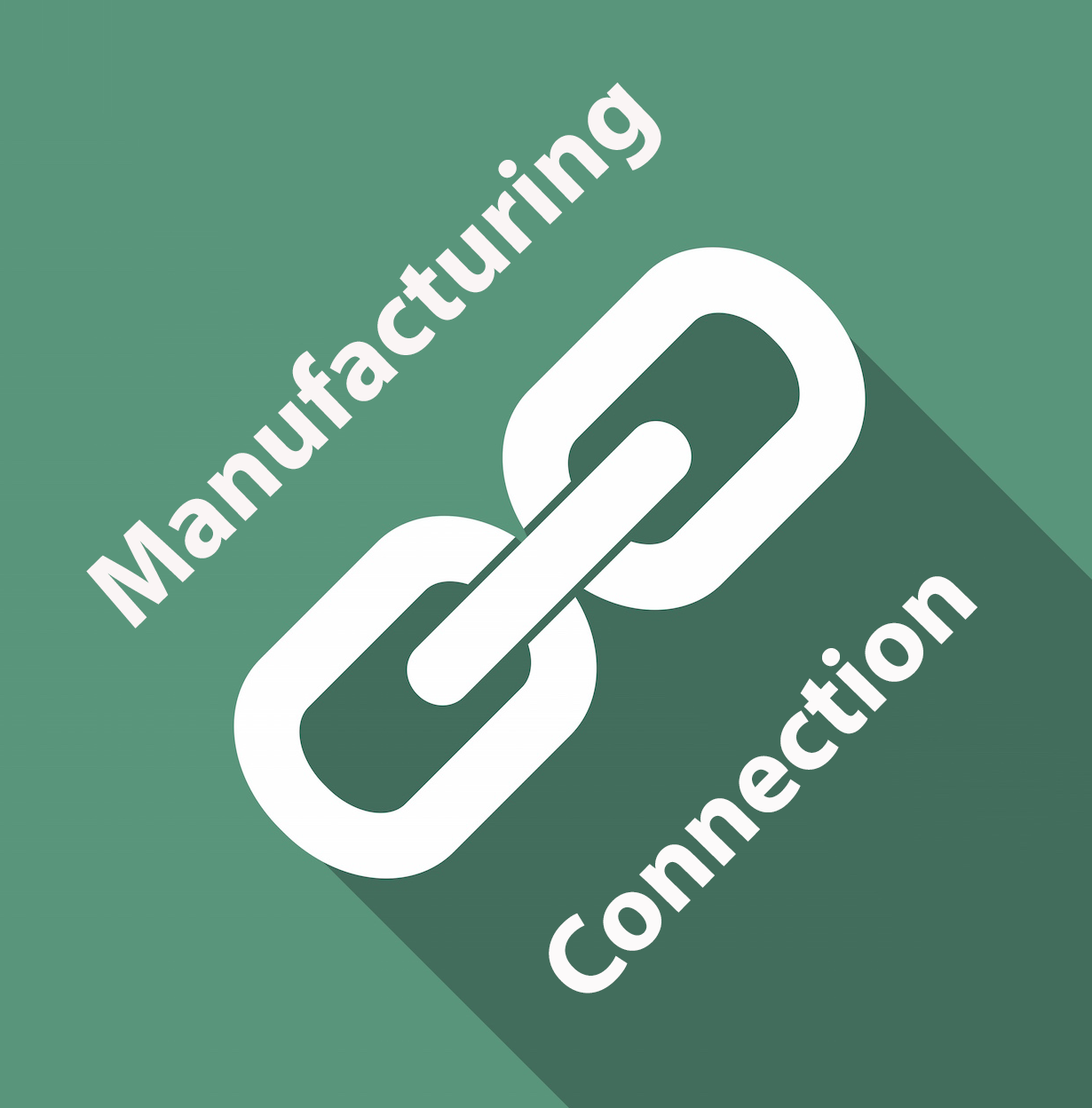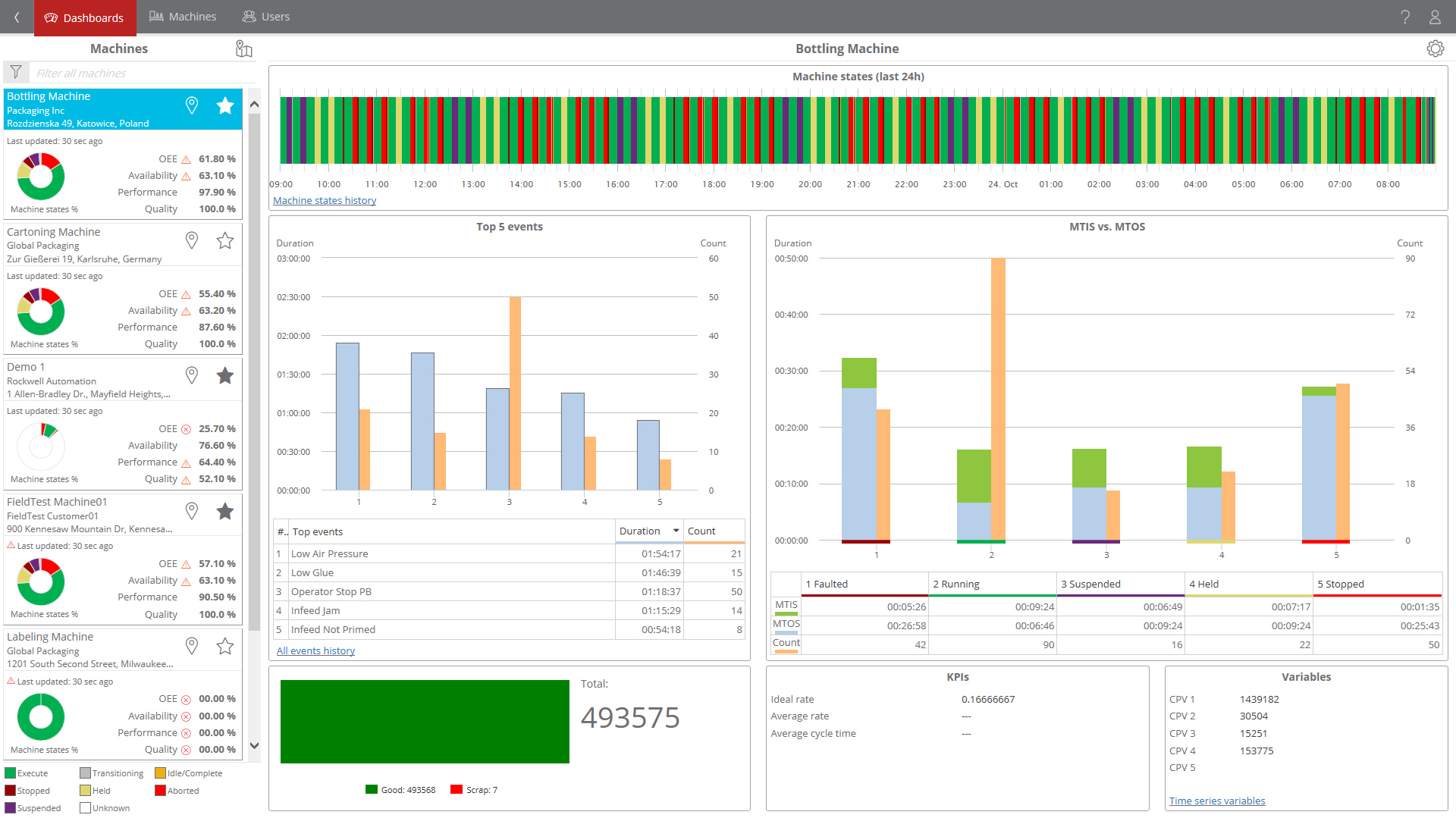
by Gary Mintchell | Nov 28, 2016 | Automation, Networking, Technology

FDT IIoT Server
The FDT Group announced a revised mission statement, an IIoT Server, and agreements with other organizations—OPC Foundation, ODVA for CIP, and AutomationML–at its press conference at SPS 2016 in Nuremberg.
This highlights the role of technology organizations in this connected era—they must cooperate and collaborate or die.
“FDT is the open standard for industrial automation integration of networks and devices, harnessing IIoT and Industrie 4.0 for enterprise-wide connectivity” proclaims the organization on its updated Website.
The FDT Group launched FDT/IIoT Server (FITS) for mobility, cloud, and fog enterprise applications. The FITS solution protects industry investments in FDT through advanced business logic, well-defined interfaces and common components, and enables operating system (OS) agnostic implementation of the technology while supporting today’s integrated automation architecture.
The server features robust layered security leveraging vetted industry standards and utilizing encrypted communications with transport layer security (TLS).
FITS also takes advantage of an OPC Unified Architecture (OPC UA) annex enabling sensor-to-cloud, enterprise-wide connectivity in industrial control systems used in the process, hybrid and factory automation markets. Together, FDT and OPC UA allow sensor, network and topology information to permeate the enterprise, including mobile devices, distributed control systems (DCSs), programmable logic controllers (PLCs), enterprise resource planning (ERP) systems, the cloud, and the IIoT and Industry 4.0.
According to Glenn Schulz, managing director of the FDT Group, the FITS solution represents the key architectural role that FDT plays in an intelligent enterprise. “The FDT Group is working with the various IIoT initiatives around the world to ensure that our new architecture meets their emerging requirements,” Schulz said. “In addition, the FDT platform is being enhanced to include operating system agnostic support for standard browsers, fit-for-purpose apps, and general web services for any potential expansion. These advancements underscore our support for the hundreds of thousands of installed FDT/FRAMES and tens of millions of FDT-enabled products in the global installed base.”
It announced the release of an annex to the FDT standard for the OPC Unified Architecture (OPC UA).
The FDT/OPC UA annex is intended for implementation by automation system manufacturers in FDT Frame Applications (FDT/FRAMEs). System suppliers with an FDT/FRAME embedded in their distributed control system (DCS), asset management system, programmable logic controller (PLC) or other system have the ability to include an OPC UA server in an application accessible from any OPC UA client application.
The combined FDT/OPC standards create a single system infrastructure that standardizes the connection of industrial networks, automation systems and devices. This approach enables unification of system engineering, configuration and diagnosis in Industrie 4.0, and supports Industrie 4.0 devices, but is also able to build a bridge to Industrie 3.0 networks and devices.
Also announced was release of an updated annex to the current FDT standard for ODVA’s media-independent Common Industrial Protocol (CIP). Network adaptations of CIP include EtherNet/IP, DeviceNet, CompoNet and ControlNet. The latest version of the CIP annex to the FDT specification enables the use of proven and widely implemented ODVA networks in FDT/FRAME Applications with the latest enhancements.
And a further announcement was integration of the open AutomationML data exchange standard into open, non-proprietary FDT Technology. Together, the two standards will help advance global adoption of Industrie 4.0 solutions.
First developed in 2006, AutomationML is intended to standardize data exchange in the engineering phase of production systems.

by Gary Mintchell | Nov 18, 2016 | Automation, Networking, Standards
News regarding Time Sensitive Networking continues to flow. The University of New Hampshire InterOperability Laboratory (UNH-IOL), an independent provider of broad-based testing and standards conformance services for the networking industry, announced the launch of three industry-specific time sensitive networking (TSN) consortiums – Automotive Networking, Industrial Networking, and ProAV Networking – designed to provide deterministic performance within standard Ethernet for real-time, mission critical applications. By providing high quality test plans, tools, and test beds for TSN, UNH-IOL allows businesses to improve products and accelerate market readiness.
“Standards-based precise time, guaranteed bandwidth, and guaranteed worst-case latency in a converged Ethernet network is a game-changer to many industries,” said Bob Noseworthy, Chief Engineer, UNH-IOL. “Through UNH-IOL’s industry-specific TSN consortiums, companies can be at the forefront and drive the technology forward by validating their solutions with a full suite of testing services, which will allow applications such as self-driving cars and the Industrial Internet of Things (IIoT) to take off.”
Originally established as a “best effort” network, Ethernet needs additional specific features to deploy mission critical applications. TSN standards enable deterministic real-time communication over Ethernet, allowing solutions to be built to provide extremely precise, predictable timing across the network. By adding features to Ethernet such as time synchronization, ingress policing, seamless redundancy, frame preemption, scheduled traffic, and stream reservation, TSN ensures mission-critical, time sensitive data is not held up on the network, promoting an interoperable ecosystem spanning across many industries. As TSN standards mature, UNH-IOL consortium members are able to support rapid development of conformance and interoperability solutions for emerging standards, validating their silicon and early products by gaining access to test solutions as well as multi-vendor test beds.
A major driving force behind the development of TSN standards is the emerging Automotive Ethernet market. The future connected, autonomous vehicle requires the time sensitivity and predictability in networking that TSN provides to support Advanced Driver Assistance System (ADAS) requirements, infotainment expectations from consumers, and other elements of vehicle electronics. Supporting automotive original equipment manufacturers (OEMs) and manufacturers supplying OEMs enabled with deterministic Ethernet solutions, the TSN Automotive Networking Consortium provides a setting for collaboration and participation in shaping the emerging standards through neutral, third party conformance and interoperability testing.
TSN’s importance is also emerging in industrial automation due to the rise in interest around the IIoT, specifically the mission-critical, time sensitive data that must be transferred and shared within strict bounds of latency and reliability. TSN enhancements for Industrial Ethernet provide standards-based determinism and reliability needed for these applications. The TSN Industrial Networking Consortium brings together stakeholders to realize the benefits of TSN – bandwidth, security, interoperability, and latency and synchronization for IIoT, robotics, assembly plants, and machines, as well as shape the standards and protocols for TSN in the industrial market.
Recent enhancements and certifications in the audio/video market have created a wider choice of compatible products and open technology that brings high-quality AV networking within the reach of any size Professional AV system. TSN enhancements provide the important timing audio and video systems need. The Pro AV Networking TSN Consortium is a testing ground for the promises of seamless redundancy, low-latency, and synchronization in the professional audio/video market.
UNH-IOL provides the test facility for stakeholders across multiple industries – automotive, industrial, and Pro AV – to drive the emerging, maturing TSN standards. To learn more about joining the new consortiums, please visit: Automotive Networking TSN Consortium, Industrial Networking TSN Consortium, Pro AV Networking TSN Consortium.

by Gary Mintchell | Nov 16, 2016 | Manufacturing IT, Operations Management, Software
The major manufacturing management software trend of the year is modular. Let’s make it easier to buy, install, configure, and use. The latest company with a major upgrade is Parsec. The company has announced launch of the latest version of its modular manufacturing management software: TrakSYS. A unified, 100% web-based platform with multiple, fully-integrated modules, TrakSYS can be used as a full manufacturing execution system (MES), or deployed to solve one or more business challenges — from performance and quality to e-records, maintenance, workflow, and more.
TrakSYS gathers critical operations data from machines and people, and delivers insights to help operations run more productively, safely and profitably. Leveraging 30 years of experience in delivering manufacturing solutions, Parsec designed this version of TrakSYS to simplify manufacturing operations in a variety of industries – from pharmaceutical and packaged goods to food and beverage, automotive and more.
“Manufacturing is complex, but your software shouldn’t be,” said Eddy Azad, CEO for Parsec. “The key advantage of TrakSYS lies in its flexibility. TrakSYS has all of the power of traditional MES, without the ‘weight’ and cost. Manufacturers can simply turn on the features they want at any time and customize a solution that specifically addresses their needs.”
Manufacturing Management – Simplified
Under the strain of increased regulations for accurate, accessible electronic recordkeeping, manufacturers need a real-time view of manufacturing operations. The pressure to increase quality and quantity, while reducing costs, also has manufacturers seeking a deeper understanding of trends and patterns and new ways to drive efficiency. Custom software and traditional MES solutions can be used to address these concerns, but they are costly and complicated to manage.
Azad, explains, “It’s all about making software easier to use and more cost-effective to deploy, maintain and scale.”
One Platform, Many Applications
TrakSYS is an integrated platform that contains all of the functionality in one package. The modular nature of TrakSYS brings complete flexibility to deploy only the functions that are required, without a major software upgrade. TrakSYS business solutions include OEE, SPC, e-records, maintenance, traceability, workflow, batch processing, sustainability, labor and more.
“Whether a factory has one line or 100, uses manual or automated production processes, relies on PLCs or an IIoT infrastructure, TrakSYS can help. We designed this powerful version of our proven software with the idea that software should help manufacturers to do their job, not become the job,” added Azad.
The latest version of TrakSYS is now available.

by Gary Mintchell | Nov 8, 2016 | Internet of Things, News, Operations Management, Organizations
The Industrial Internet Consortium has been consistently in the news lately. Members have been added and testbeds established. Here is another announcement furthering the cause of collaboration, and one hopes, interoperability in the Internet of Things (IoT) space.
The Industrial Internet Consortium (IIC), the global, member supported organization that promotes the accelerated growth of the Industrial Internet of Things (IIoT), announced it will collaborate with the IoT Acceleration Consortium (ITAC) to further the development of Internet of Things (IoT) in numerous industries.
The goals of the cooperation are to promote the digital economy by preventing fragmentation and to harmonize various aspects of IoT. Joint activities will include: · Identifying and sharing best practices · Collaborating on test beds and research and development projects · Realizing interoperability by harmonizing architecture and other elements · Collaborating on standardization · Other activities to which both parties agree
“We were delighted to sign the Memorandum of Understanding with the IoT Acceleration Consortium,” said Dr. Richard Soley, Executive Director of the Industrial Internet Consortium. “Both consortiums share mutual goals and we look forward to working closely with ITAC on testbeds and research and development projects to advance the adoption of the industrial Internet.”
The IoT Acceleration Consortium (ITAC) aims to combine the strengths of government, industry, and academia to build a structure for developing and demonstrating technologies related to the promotion of Internet of Things (IoT). It also aims to create and facilitate new business models. ITAC promotes the development, demonstration, and standardization for IoT-related technologies and the creation of various IoT-related projects and recommendations required to run those projects.
The Industrial Internet Consortium (IIC) is a global, member supported, organization that promotes the accelerated growth of the Industrial Internet of Things by coordinating ecosystem initiatives to securely connect, control and integrate assets and systems of assets with people, processes and data using common architectures, interoperability and open standards to deliver transformational business and societal outcomes across industries and public infrastructure. The Industrial Internet Consortium is managed by the Object Management Group (OMG).

by Gary Mintchell | Nov 3, 2016 | Internet of Things, Manufacturing IT, Software
Back in the day when the Industrial Internet of Things (IIoT) was called Machine-to-Machine (M2M), the promised benefit was for OEMs monitoring their machines on customer sites. Providing that the customer allowed it, the OEM could collect data on performance of the machine and its components, offer maintenance services, and alert customers to potential problems.
Customers generally were leery about allowing connectivity to the outside world. This could become an open port for hacking and even open a gateway for stealing Intellectual Property. Over the ensuing 15 years, many improvements have been made in networking and security. Now, Rockwell Automation is releasing a gateway and cloud analytics platform that hopes to deliver just such benefits.

As Rockwell states in its release, “IoT-enabled assets and machines can improve operations when information that matters is delivered to the people who can use it best. Yet, equipment builders who invested heavily to build smart machines often are blind to the use and performance of their products after deployment.” Rockwell Automation announced FactoryTalk Analytics for Machines cloud application – a new Microsoft Azure cloud-enabled capability that empowers equipment builders with information.
As part of the company’s expanded Information Solutions strategy, the application provides access to performance analytics from deployed systems in order to gain valuable insight to support their customers. For manufacturers going through a digital transformation, this capability capitalizes on connected technologies to help drive higher availability and output while reducing maintenance costs.
“The sophistication of plants today has made specialization and collaboration essential,” said Axel Rodriguez, SaaS/Cloud products manager, Rockwell Automation. “Your manufacturing operations and maintenance teams have a lot on their plates. Allowing your equipment builders – who know their machines like the backs of their hands – to become collaborators in performance analytics can free up the best minds to focus on optimizing entire lines, plants or applications.”
OEMs can embed a FactoryTalk Cloud gateway device onto the machines they provide. Once commissioned, the machine starts collecting data. The data from selected controllers is sent to the FactoryTalk cloud application securely with minimal configuration by the equipment builder or the end user. The equipment builder then has access to real-time analytics and actionable information via prebuilt dashboards. It’s that simple!










